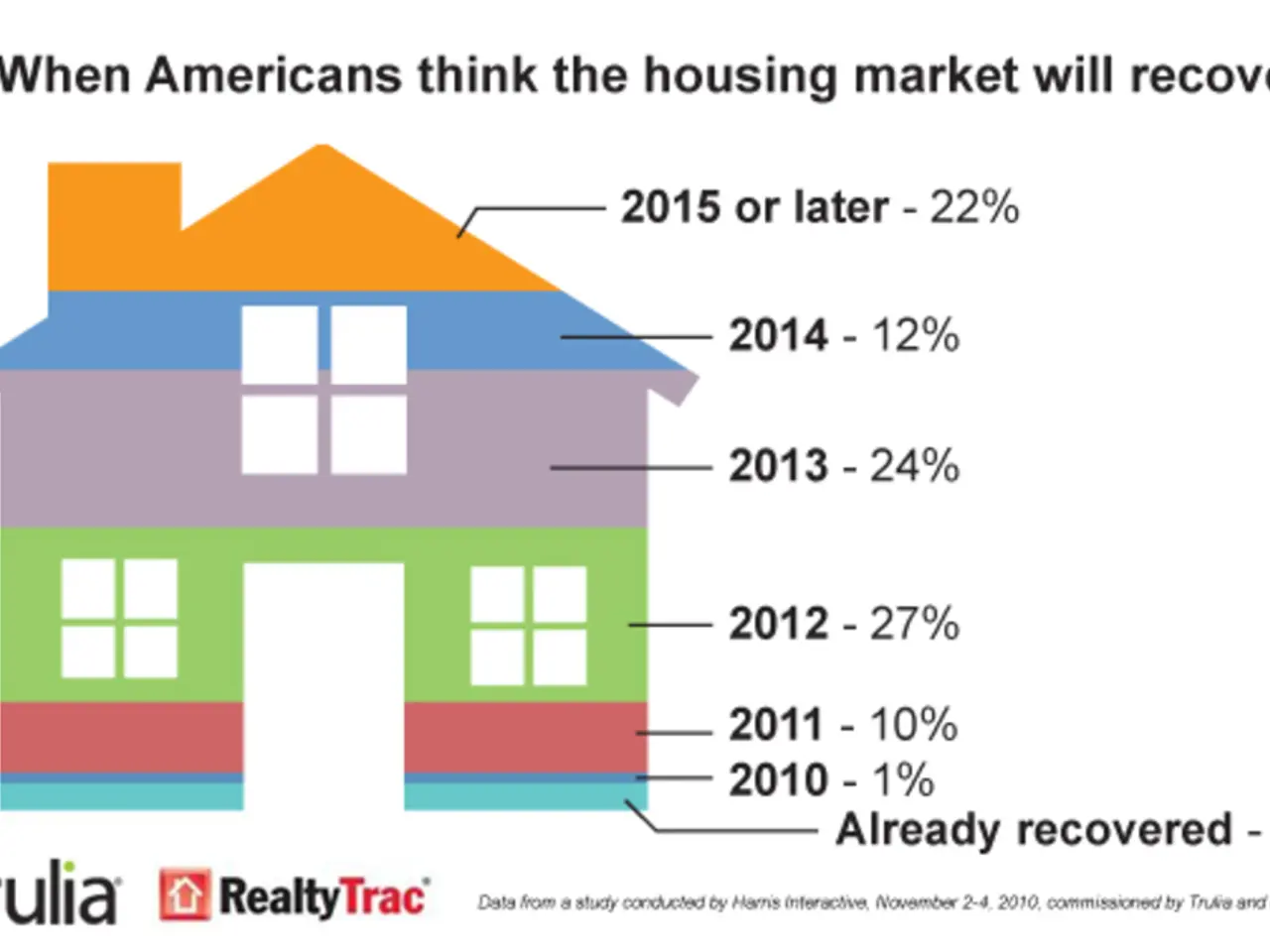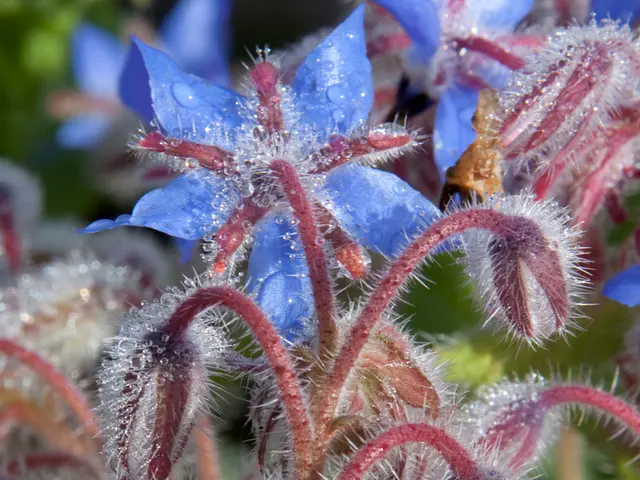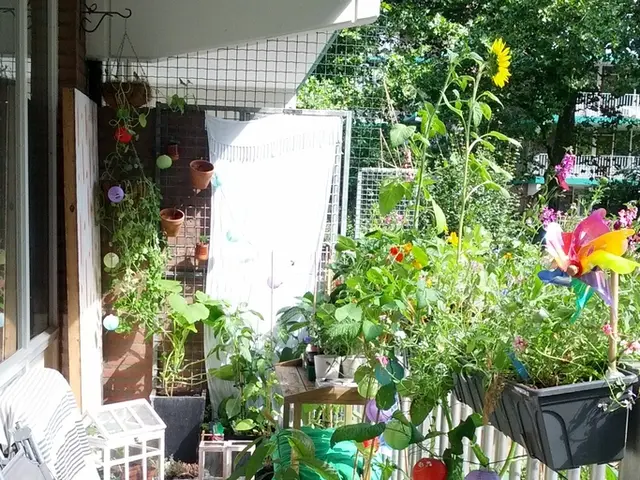Multicolor Harmonies: Insight from a Color Expert on How Triadic Color Combinations Achieve Balance in Vibrant Schemes
Bringing Life to Your Interior Spaces with Triadic Color Schemes
Triadic color schemes, a vibrant and harmonious approach to interior design, involve the strategic selection of three colors evenly spaced around the color wheel. This colorful technique can transform your living spaces into playful and bold environments, offering a balance between harmony and contrast.
One of the popular triadic color combinations is Red-Orange, Yellow-Green, and Blue-Violet. For instance, a dusty trio made up of muted denim, warm chocolatey tones, and soft olive can create a warm and inviting atmosphere. Alternatively, an earthy palette featuring oxidised red, moody blue, and toasted, straw yellow can offer a more grounded and rustic feel.
When implementing triadic color schemes in interiors, it's beneficial to start slowly, such as using a terracotta floor, green marble elements, and a piece of artwork with touches of violet, all grounded by off-white walls. Yellow tones can come through a lamp base or tray, while rattan, seagrass, sisal, and brass bring warmth and yellowish notes.
The 60-30-10 rule is a useful tool for thinking about proportion and balance when working with more than one color in interior design. This rule suggests that 60% of a space should be the main color (usually a wall, sofa, or large rug), 30% should be the supporting color (curtains, joinery, or an armchair), and 10% should be the accent color (cushions, lamps, or artwork).
In real homes, triadic colors don't have to be in their clearest, brightest, and most saturated forms. They can be muted or deeper versions, such as terracotta, ochre, and inky blue. For example, dusty blue walls like 'Kittiwake' by Farrow and Ball can be used as the main color in a Red-Yellow-Blue triadic color scheme, with rich red such as 'Bronze Red' by Little Greene used for woodwork.
Steel, mirrors, silver details, nickel or chrome hardware, and cool-toned concrete can add a cool, almost blue-ish hue to a room, providing a refreshing contrast to the warm tones of the triadic color scheme.
It's important to remember that rules in interior design can be broken, and it's best not to use color theory in interiors sometimes. Older color models, like those created by Phillip Otto Runge, offer a more intuitive and natural relationship to color and can be more relevant for interior design.
By employing triadic color schemes in your interior design, you can create a lively and expressive yet grounded look that enhances spatial aesthetics, providing color harmony and dynamic vibrancy, all while preventing visual chaos through careful balance and proportion.
- Incorporating a triadic color scheme of Red-Orange, Yellow-Green, and Blue-Violet into the decor of your living room can result in a harmonious and vibrant space that exudes both harmony and contrast.
- A subtle trio consisting of muted denim, warm chocolatey tones, and soft olive can create a cozy atmosphere, perfect for a warm and inviting kitchen setting.
- Art pieces with shades of violet can complement the terracotta floor and green marble elements in an interior design setup, bringing together a trendy and stylish interior design theme.
- When designing your home-and-garden space using triadic color schemes, remember to follow the 60-30-10 rule for maintaining a balanced and visually pleasing space.
- Experiment with muted or deeper versions of triadic colors, such as terracotta, ochre, and inky blue, to bring a sense of sophistication to your interior-design inspired living space.
- The addition of steel, mirrors, cool-toned concrete, and silver details can add a refreshing contrast to the warm tones of a triadic color scheme, offering a unique and modern touch to your lifestyle.





